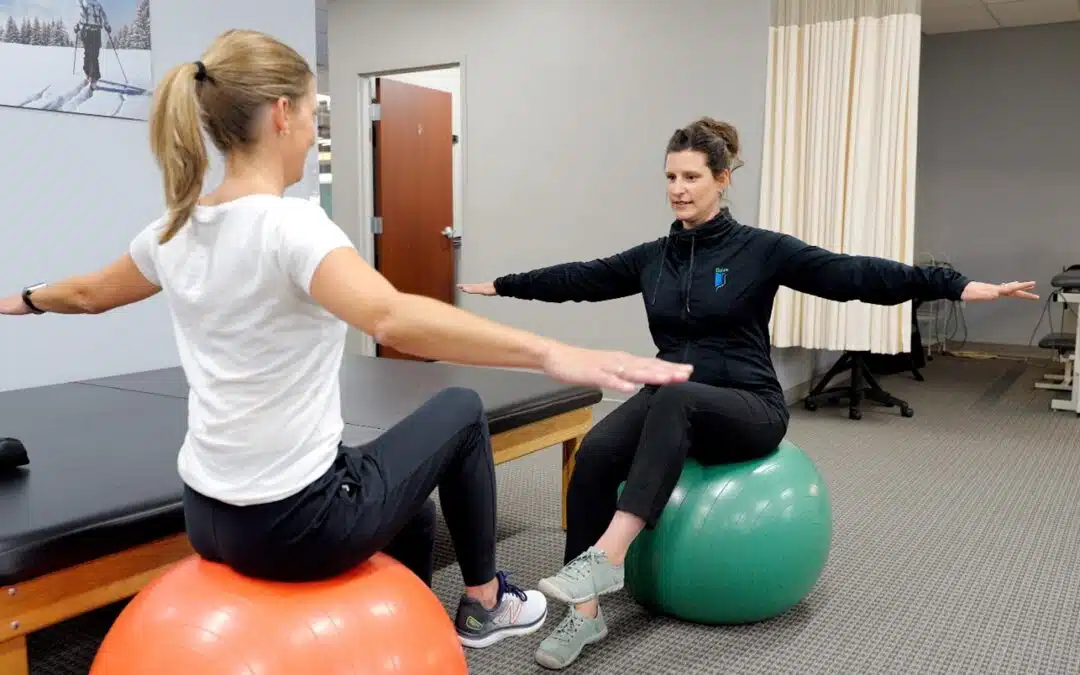Pain in the Brain: How does pain work?
It is common to think that pain is a result of tissue injury. You scrape your knee and it hurts. As the tissues heal, the pain goes away. But did you know, that how intense the pain is, how long it lasts, if it starts to spread, or become chronic may have more to do with your nervous system than the severity of that scrape?
Researchers studying pain neuroscience such as Adriaan Louw, PT, PhD in his book entitled Why Do I Hurt? have been able to finally explain pain and help patients make sense of it. What we now know is that pain is 100% of the time experienced by the brain. Our brain connects information coming in from those tissue injuries and puts context around it. Our previous pain experiences, thoughts, fears, and feelings about the situation can chemically and neurologically influence how we feel pain. Further, the longer the pain lasts, the nervous system can become more sensitive. So, activities and movements that didn’t hurt before now become more painful.
Here is another fact– pain can exist without tissue injury. That is because a sensitive nervous system can be the result of mental health, illness, stress, lack of sleep, and other influencing factors.
Pain is Complicated – Why a Cognitive-Behavioral Approach?
Cognitive-Behavioral Therapy (CBT) is founded on the premise that our thoughts, feelings, and behaviors influence each other. Often patients that experience chronic pain lose hope of feeling better. They may have defeated thoughts, anxiety, or depression. This may play out in behaviors such as avoiding activity or poor pacing of activity. The result is more nervous system sensitivity – and the pain cycle continues in a downward spiral.
Understanding and examining your thoughts and behaviors can be very helpful in recovery. Therapists that are trained in techniques such as cognitive restructuring, pain-neuroscience education, behavior and movement training can help patients in chronic pain find a path to recovery and reduce their nervous system sensitivity over time.
How does iSpine Rehab incorporate CBT?
At iSpine we study chronic pain, cognitive-behavioral models, and learn coaching skills that help patients make sense of their painful condition and get moving again. Using our unique Pain Rehabilitation Guidebook, patients work through different coping exercises with their therapists. They explore pain-neuroscience education (PNE), coping skills, stress management, pacing, and self-care. Putting new behaviors in place combined with knowledge can really be effective in reducing the pain experience.
“Providing patients knowledge about how pain works reduces fear and inspires hope for a better future. Patients that embrace a positive mindset are much more likely to achieve their goals.”
How well does cognitive behavioral pain management work?
 In an analysis published in the Cochrane Library, 59 studies were assessed to identify the benefits of CBT. The authors found significant indication across a large evidence base that cognitive behavioral pain management does have beneficial effects for reducing pain and distress in chronic pain situations. Additionally, a 2018 study included in the National Library of Medicine found that CBT had a notable effect on the anxiety and depression that can exacerbate chronic pain. They also noted that the impact of the treatment was more pronounced in those patients who displayed higher empathy. A reminder that CBC, like many other pain management treatments, isn’t a one-size-fits-all effort, and that you get out what you put into the program.
In an analysis published in the Cochrane Library, 59 studies were assessed to identify the benefits of CBT. The authors found significant indication across a large evidence base that cognitive behavioral pain management does have beneficial effects for reducing pain and distress in chronic pain situations. Additionally, a 2018 study included in the National Library of Medicine found that CBT had a notable effect on the anxiety and depression that can exacerbate chronic pain. They also noted that the impact of the treatment was more pronounced in those patients who displayed higher empathy. A reminder that CBC, like many other pain management treatments, isn’t a one-size-fits-all effort, and that you get out what you put into the program.
Tips from the experts: Make the most of your rehabilitation program
- Understand results take time and it takes work. Be an active participant. The more of the work you fully engage with, the better your results will be.
- Communicate openly with your therapists so they can customize skills and techniques to meet your needs.
- Practice the skills. Even when you’re not actively in pain, reframing your mindset is like working a new muscle. It needs regular attention and effort to develop. Do the homework you’re assigned—it’s given to you for a reason!
- Finish the program. It seems obvious, but just like with many other physical therapy modalities, many patients drop off if they see small improvements or just can’t prioritize the process. The benefits of completing the work will be invaluable to both your mental and physical well-being.
Ready to consider working with psychologically informed therapists and add cognitive behavioral coaching to your pain management treatment?
iSpine Clinics has clinicians on staff who specialize in Cognitive Behavioral Coaching. A great first step is setting up a Rehabilitation and Physical Therapy Consultation. In this session, our specialists will work with you to create a customized care plan that will address your situation holistically and meet your unique needs.


